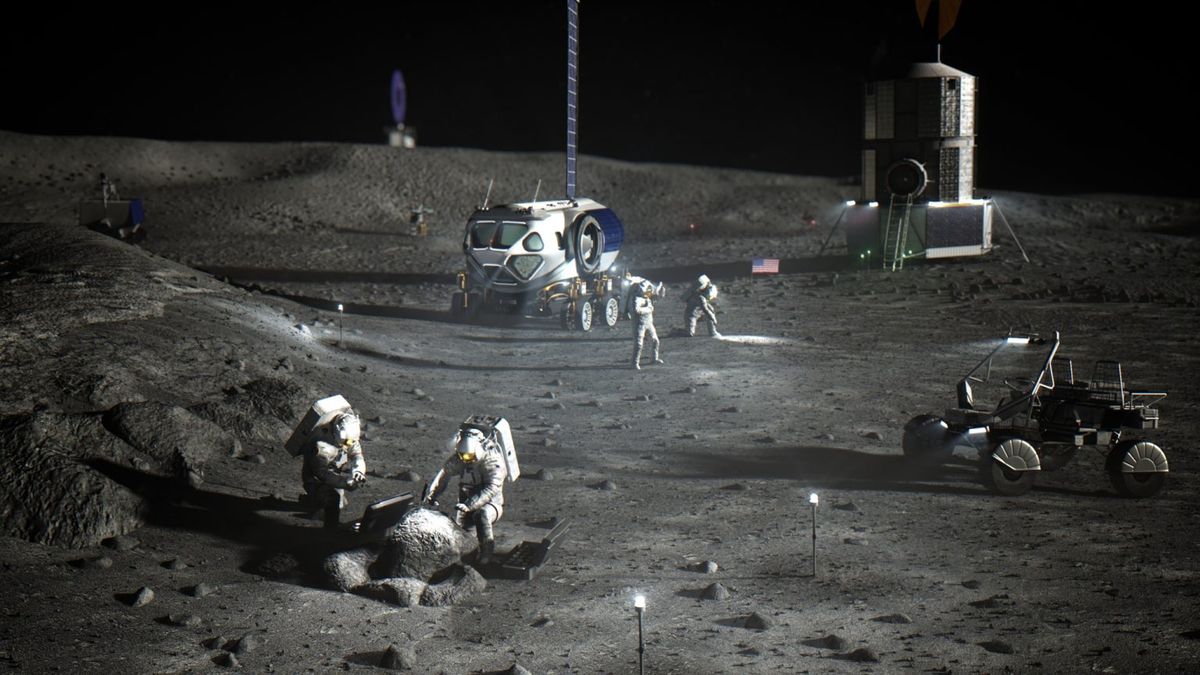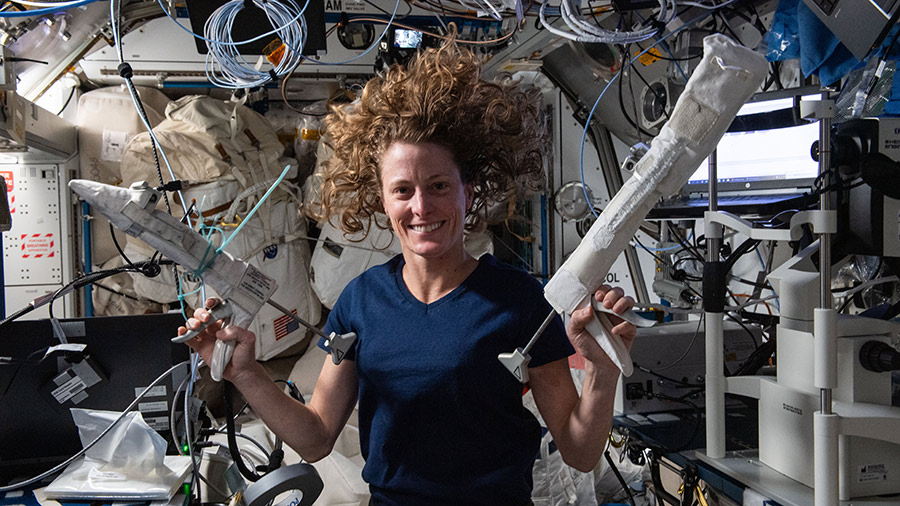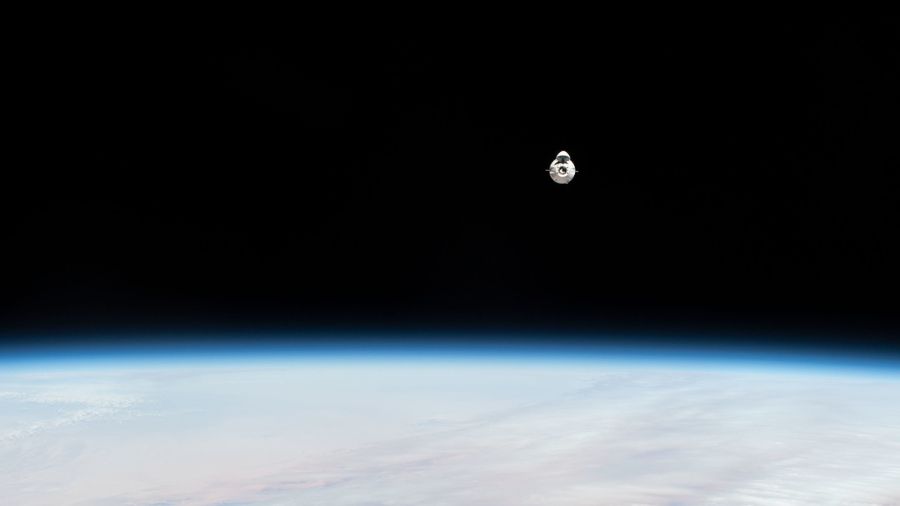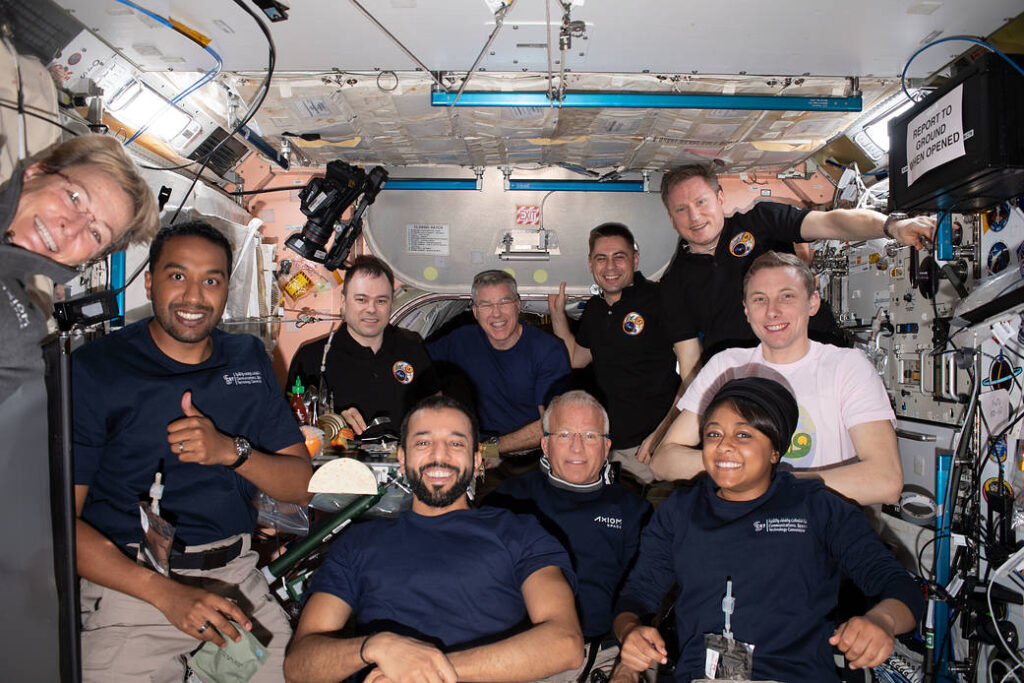
Science looked to construction at the beginning of the week aboard the International Space Station as the lab residents explored a variety of space assembly techniques. A new cargo craft also is due to arrive later this week replenishing the orbital crewmates with food, fuel, and supplies for the next several months.
NASA and its international partners are studying ways to make it economical to construct satellites in space, as well as build crew habitats on the Moon. Building the materials on Earth and launching them aboard rockets is costly in terms of mass and fuel. One option engineers are considering includes autonomous satellites that can navigate to other satellites for refueling, spacecraft repair, and orbital manufacturing. Another possibility, is using the microgravity environment to mix lunar soil with other materials to make cement and build habitable structures on the Moon.
NASA Flight Engineer Jeanette Epps activated a pair of Astrobee robotic free-flying assistants inside the Kibo laboratory module Monday morning. She then attached a connecting interface system, called CLINGERS with an embedded navigation sensor, to the cube-shaped, toaster-sized devices. For a few hours, Epps, with assistance from ground controllers, monitored the Astrobees as they demonstrated autonomous docking maneuvers with the CLINGERS device that may benefit construction in space.
NASA Flight Engineer Matthew Dominick explored how microgravity affects the production of cement materials that could be used to build infrastructure on the lunar surface. He mixed two bags containing simulated lunar soil and other materials with a liquid solution, he placed another bag with hot water in between them, then he inserted them inside a thermos can for overnight incubation. After several more weeks of settling at ambient temperature, the concrete samples will be returned to Earth aboard a SpaceX Dragon cargo craft for analysis.
NASA astronauts Mike Barratt and Suni Williams began their shift together inside the Tranquility module replacing components on the advanced resistive exercise device. Barratt went on and performed biological sample operations in the Human Research Facility. Next, he tested specialized goggles that track an astronaut’s eye movement to help monitor how crews adapt to living in weightlessness.
After her workout machine job, Williams inspected and cleaned a carbon dioxide removal device in the Destiny laboratory module. She then took turns with fellow NASA astronaut and Crew Flight Test member Butch Wilmore for a standard hearing test. The duo also participated in a conference with Boeing flight controllers before wrapping up the day configuring computer tablets inside the Unity module.
NASA Flight Engineer Tracy C. Dyson had a light duty day aboard the orbital outpost spending a few moments packing computer gear for return to Earth and installing air quality monitors in the Zarya module.
Roscosmos cosmonauts Oleg Kononenko and Nikolai Chub trained for the arrival of the Progress 89 cargo craft due to dock to the rear port of the Zvezda service module at 1:56 a.m. EDT on Saturday. The duo practiced using the telerobotically operated rendezvous unit, or TORU. The TORU would be used to remotely control the Roscosmos spaceship in the unlikely event it would be unable to complete its automated docking. The Progress 87 cargo craft will undock and vacate the rear Zvezda port at 10 p.m. on Monday for a destructive, but safe reentry above the Pacific Ocean completing a six-month resupply mission.
Flight Engineer Alexander Grebenkin spent the first part of his day cleaning water tanks and performing other orbital plumbing work. After lunchtime, he explored ways international crews and flight controllers can improve communication then conducted photographic inspections inside Zvezda.
Learn more about station activities by following the space station blog, @space_station and @ISS_Research on X, as well as the ISS Facebook and ISS Instagram accounts.
Get weekly video highlights at: https://roundupreads.jsc.nasa.gov/videoupdate/
Get the latest from NASA delivered every week. Subscribe here: www.nasa.gov/subscribe




